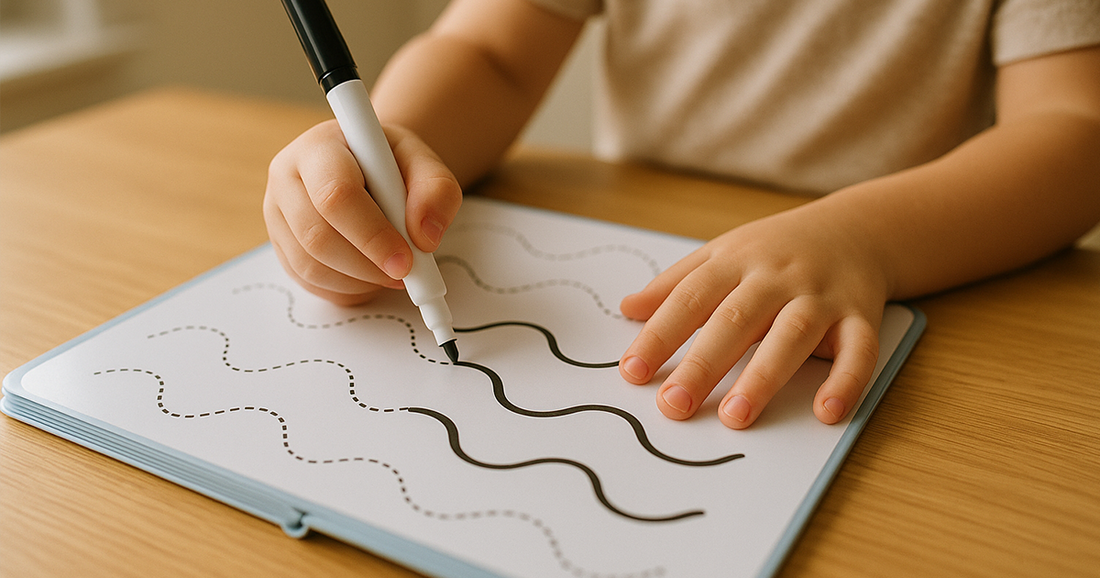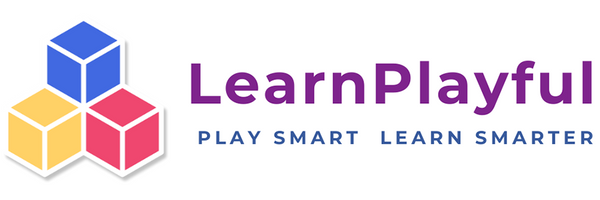
Pen Control Training Book for Ages 3–6: Features, Age Guide & Reusable Tips
Share
Master Pen Control: Why It Matters for Early Learning
Start with a clear goal: build steady hands and calm focus through short, repeatable practice. A reliable pen control training book gives preschoolers a simple path—trace straight, curved, and zigzag lines before moving to letters and numbers. For families limiting screen time, these guided pages create a quiet routine that still feels playful. Use ten to fifteen minutes a day and celebrate small wins, like cleaner corners or smoother curves. An early learning workbook should keep instructions visual and steps incremental so kids aren’t overwhelmed. Over a few weeks, the same strokes appear in coloring, cutting, and simple writing, which is why a fine motor skills workbook becomes a handy bridge between play and school readiness—without promising outcomes that every child must meet.
Short on time? Scan the feature checklist and age guide below, then pick a starter set that fits your routine.

Key Features of a Good Pen Control Workbook
Choose tools that make practice easier to repeat. A wipe clean copybook lets children try a line several times without burning through pages. Look for erasable markers, sturdy boards or thick paper, and step-by-step arrows that show stroke order. A reusable handwriting practice workbook should also include varied line patterns and simple shapes that build toward letters and numbers. Montessori tracing workbook designs often keep pages uncluttered so attention stays on the stroke, not the decoration. Check that pages alternate between tracing and free practice space—this balance helps kids transfer control from guided paths to independent lines. Finally, confirm age guidance and durability, since younger learners press hard and may need extra-tough surfaces.
- Coated, wipe-clean pages with space for free practice
- Erasable markers and clear stroke arrows
- Uncluttered layouts to reduce distractions
- Durable boards or thick paper for firm grips
Age-Appropriate Workbook Selection (3–6 Years)
Match activities to attention span and hand strength. For ages three to four, focus on bold paths and large movements—straight lines, gentle curves, and trace-the-picture games. As kids reach four to five, narrow paths slightly and introduce simple patterns that combine strokes. By five to six, add beginner letters and numbers with room to re-trace and a little space for copy-from-model practice. A tracing book age 3-6 should grow in complexity without sudden jumps, and handwriting practice for preschoolers works best when pages rotate skills—line work one day, shape work the next—so progress stays visible. If a child seems frustrated, step back to easier patterns and shorten sessions rather than pushing through.
How to Use Reusable Practice Copybooks Effectively
Keep routines short, simple, and repeatable. Start with two or three lines, then add one new pattern when confidence grows. With reusable practice copybook tips in mind, wipe pages clean after each attempt so kids feel a fresh start. A small sticker chart or verbal praise helps motivation more than long sessions. Try a magic writing practice copybook that pairs path arrows with a blank box for free drawing—kids love applying the stroke to a little picture of their own. Rotate pens with different nib widths to encourage lighter pressure. For families emphasizing sustainability, an eco-friendly tracing workbook reduces paper waste while supporting frequent practice, which is the real driver of better control.
- 10–15 minute sessions, most days
- Reset pages to keep attempts fresh
- One new pattern after small wins
- Rotate nib widths to encourage lighter pressure
Reusable vs Standard Workbooks: Which One to Buy?
Think in terms of total practice, not page count. A reusable vs standard workbook comparison usually favors boards or coated pages if your child benefits from repeating the same stroke several times. Standard workbooks can be fine for occasional tracing, but once pages are filled, you need another book. An eco-friendly handwriting workbook reduces waste and keeps the routine consistent—wipe, retry, move on. On cost, reusable formats may be higher upfront and cheaper over a month of daily practice. If you prefer to save completed pages as keepsakes, mix approaches: use a reusable book for drills and a low-cost pad for occasional progress snapshots. Either way, aim for frequent, bite-size sessions.
- Reusable: higher upfront, lower per-practice cost
- Standard: fine for occasional tracing
- Hybrid: drills on reusable, milestones on paper
What Parents and Teachers Are Saying
Families report calmer pre-bed routines and fewer “start-over” tears when pages wipe clean. Parent reviews handwriting book themes often mention visible progress in curved lines and simple shapes after consistent daily practice. Teachers point out that students who trace regularly tend to approach letters more confidently because the building blocks—direction, spacing, and start-to-finish strokes—already feel familiar. Look for teacher feedback tracing workbook notes about clear arrows and generous practice space; crowded pages can distract new writers. Track a child’s wins in a small log—two smoother curves today, a neater square tomorrow—so encouragement stays concrete. Progress is personal and steady practice matters more than speed.

FAQ: Common Questions About Pen Control Books
Most families start between ages three and six, adjusting difficulty rather than pushing pace. If a set claims to include pens, check whether they are dry-erase or water-based and confirm replacements. A faq pen control book section should also address durability: coated pages resist dents better, helpful for strong grips. Many parents ask about skill gains—expect smoother lines and more consistent shapes with regular practice, not guarantees. When possible, choose an erasable pen set workbook that includes a cloth or eraser tip. If a child resists tracing, switch to short drawing prompts built from the same strokes to keep the routine light.
Where to Buy Pen Control Training Books Online
When you’re ready to compare options, check page materials, included pens, and age guidance first. Trusted marketplaces and brand stores list specs clearly and show real photos of page surfaces. To save time, skim reviews that mention coating quality and marker performance, then confirm return windows before checkout. If you prefer a kit, search for a pen control training set with replacement nibs or extra markers. Families focused on value can bookmark seasonal sales or bundle offers. When in doubt, buy pen control book options with straightforward returns so you can test routine fit at home and keep what truly supports your child’s practice.
FAQ
What age is best for starting pen control training?
Most children begin comfortably between ages three and six. Start with large paths and simple curves, then narrow lines as control improves. A pen control age guide can help you pick pages that fit attention span and grip strength. If the activity feels frustrating, shorten sessions and return to easier patterns. Pair tracing with short drawing prompts built from the same strokes so practice stays playful. Progress varies by child, so watch for steadier lines and smoother corners rather than aiming for a fixed timeline.
Are these copybooks reusable?
Yes. Many sets use coated pages that work with dry-erase or water-based markers. A reusable handwriting book lets kids retry the same stroke several times, which is helpful for building confidence. Look for a wipe clean copybook with included cloth or eraser tip so reset is quick. A magic writing practice copybook can add a small reveal effect that keeps practice fun. Replace markers when lines fade to avoid pressing too hard on the surface.
What skills will my child learn?
Regular tracing supports steadier hand movements, better line direction, and more consistent spacing. A fine motor skills workbook focuses on basic paths first—straight, curved, and angled lines—then introduces simple shapes, letters, and numbers. Many families notice these gains show up in coloring, sticker placement, and early writing tasks. Aim for short, frequent practice rather than long sessions to keep energy positive and progress visible.
Do these books include pens?
Often, yes. An erasable pen set workbook may include one or more markers, extra nibs, or a small cloth. Check the listing to confirm ink type and replacements. If your child presses hard, choose broader nibs that glide easily to reduce surface wear. For households sharing a set, keep a spare marker on hand so practice can continue without interruption.
